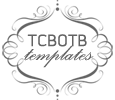Small-group reading instruction improves students’ reading levels and comprehension. Here are some steps for establishing and maintaining small, flexible groups. This is just one way to create and follow through with small-group reading instruction. You may use these steps as they are, or modify them to fit the needs of your students.
Step 1) Assessment
Every student is evaluated to find their individual instructional level. This can be done through a variety of assessments (DRA, SRI, and/or AR). Keep in mind that the groups will change as your students continue to grow. Continuous assessment throughout the year should determine the focus and membership of each group.
Step 2) Establishing Groups
Once you have established your students’ reading levels, then you can assign them to groups with four or five students in each. Depending on student reading levels, you may have four, five, or six reading groups. You may find, however, that you need to have a smaller group for struggling readers that need more remediation. Groups are flexible. Students will not be with the same guided reading group all year. Some teachers allow students to name their own groups or number the groups randomly, so the students do not connect growth or skill level with the number assigned to their group.
Step 3) Establishing a Schedule
Your schedule will depend on the amount of time allotted for your reading groups, as well as the number of groups that you have. Many teachers find that 15-20 minutes per group is a substantial amount of time to accomplish reading goals/standards on a daily basis. Be sure to consider transition time when making your
schedule. Below are some schedule examples based on the number of guided reading groups you have in your classroom. Some schedules have RtI groups meet during one of the group times during Reading Workshop. Some schedules have RtI groups meeting at a different time during the day. Every one's guided reading schedule may look a little different, and that's okay.
Scheduling Idea for 4 Groups
|
Monday
|
Tuesday
|
Wednesday
|
Thursday
|
Friday
|
Group 1
|
RtI
|
RtI
|
RtI
|
RtI
|
RtI
|
Group 2
|
Med Low
|
Med Low
|
Med Low
|
Med Low
|
Med High
|
Group 3
|
Med High
|
Med High
|
High
|
High
|
High
|
Scheduling Idea for 5 Groups
|
Monday
|
Tuesday
|
Wednesday
|
Thursday
|
Friday
|
Group 1
|
RtI
|
RtI
|
RtI
|
RtI
|
RtI
|
Group 2
|
Med Low
|
Med Low
|
Med Low
|
Medium
|
Medium
|
Group 3
|
Medium
|
Med High
|
Med High
|
High
|
High
|
Scheduling Idea for 6 Groups
|
Monday
|
Tuesday
|
Wednesday
|
Thursday
|
Friday
|
Group 1
|
RtI
|
RtI
|
RtI
|
RtI
|
RtI
|
Group 2
|
Med Low
|
Med Low
|
Med Low
|
Medium
|
Medium
|
Group 3
|
Medium
|
Med High
|
Med High
|
High
|
Super High
|
4) Establishing a Routine
Once the groups are constructed, establish a routine for movement from the guided reading group to other literacy activities (stations, independent reading, reading response journals, writing, etc). There are two keys to keeping the other students on task while the teacher is meeting with a group. One, establish routines, model routines, and practice routines over and over before beginning your work with small groups. Two, whatever the teacher gives students to do while they are not meeting with their guided group needs to be independent work that students can do on their own. This way students will not interrupt your group to ask questions about what they should be doing.
5) Working with Small Groups
Once the students are grouped, the teacher will select a different book for each group depending on the instructional level of the group and the students' needs.





